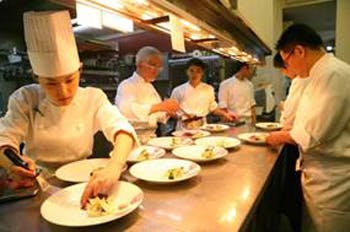Media, Celebrities Join in U.S. Beef Celebration

Japanese consumers from all walks of life have welcomed the return of U.S. beef over 20 months of age this year. Everyday shoppers helped drive up sales of American beef by 51 percent in volume and 33 percent in value through the first 10 months of 2013, but it is the opinion leaders who help shape public opinion.
Those opinion leaders - including a diverse group of reporters, lawyers, business executives, writers, intellectuals and models - turned out by the scores recently for a "welcome back" celebration for U.S. beef organized by the U.S. Meat Export Federation with funding from the U.S. grain industry that turned into a 'who's who' of Tokyo's society.
"Our intention was to generate 'buzz' for the new image of U.S. beef by gathering these influential individuals together for a day dedicated to U.S. beef," said Takemichi Yamashoji, senior marketing director for USMEF-Japan. "The reservations filled almost immediately and the event was an overwhelming success, both in terms of word-of-mouth publicity as well as media coverage."
"I am a red meat fan," said newspaper columnist Takanori Nakamura. "I am purely overjoyed that U.S. beef is more widely available in various cuts to be enjoyed. I always used to have the strong image associated with cowboys when hearing the word 'U.S. beef.' However, what I experienced today was so different with a classical French sauce. I realized that U.S. beef is actually a very sophisticated meat. It was truly an eye-opener."
That enthusiasm was shared by several dozen attendees who generated more than $850,000 in exceedingly positive advertising value from the free television, newspaper and online media publicity.

"I have long awaited the comeback of the bone-in loin not only because it is the signature item of U.S. beef, but also because it's very challenging and requires the right skill by the chef to be cooked properly," said writer Makki Makimoto. "U.S. beef that has been fully aged has a distinguished taste which stays after being cooked. It is very different from younger beef, which used to be the majority in this market."
Another benefit of the promotion was the attention it drew from Tokyo's top-rated Michelin chefs, who have been watching for public reaction to the return of older U.S. beef to Japan before committing places to it on their menus.
"These renowned chefs have very much pride, and they only show interest in products where they can find true value," said Yamashoji. "Over the first few months since access for U.S. beef was expanded, there were only a few Michelin chefs who began using it, but we are seeing a much more positive reaction now.
"The endorsements of these top chefs are powerful in the way that they reach both industry (chefs) and consumers (opinion leaders)," added Yamashoji. "This is the very reason we've cultivated relationships with them."
For the first time since 2003, Japan is once again the top export market for U.S. beef, having purchased 201,946 metric tons (445.2 million pounds) valued at nearly $1.2 billion through the first 10 months of 2013.
